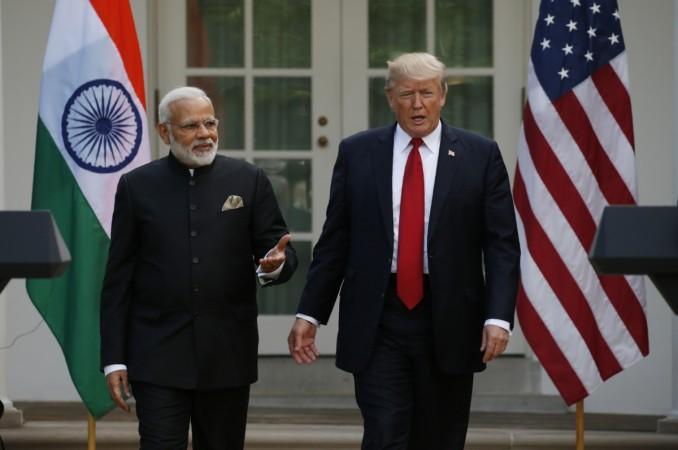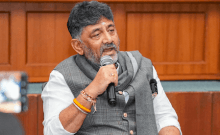
The world is watching as the United States and India two of the globe's largest and most dynamic economies stand on the brink of a historic trade breakthrough. President Donald Trump's recent pronouncements have set the stage for what he calls a "very big" trade deal, one that could reshape the $190 billion annual trade relationship and potentially chart a course toward $500 billion in bilateral trade by 2030. For both nations, the stakes are immense: market access, job creation, and strategic leverage in a world where economic ties are as consequential as military alliances.
"We are looking to get a full trade barrier dropping, which is unthinkable," declared Trump, signaling a bold vision for open and reciprocal commerce between the world's largest and most populous democracies.
The Negotiating Table: What's at Stake and Where the Lines Are Drawn
At the heart of the current negotiations is a push for the removal of longstanding trade barriers. The US seeks broad access to Indian markets, especially for its industrial and agricultural exports, while India is pressing for a rollback of 26% reciprocal tariffs set to take effect from July 9. Both sides are racing to finalize at least a "mini-deal" before this deadline a deal that could set the tone for a more comprehensive bilateral trade agreement later in the year.
This first-phase pact is expected to mirror recent US-UK trade arrangements, with India lowering Most Favoured Nation (MFN) duties on key American industrial goods, including automobiles, and offering limited market access for US agricultural products such as ethanol, almonds, apples, avocados, wine, and spirits. In return, India is seeking greater certainty on US tariffs and improved access for its own exports, including pharmaceuticals, textiles, and information technology services.
"The goal is a fair, equitable, and balanced agreement," emphasized India's Commerce Minister Piyush Goyal, underscoring the need for mutual benefit and domestic political viability.
Trump's Trade Doctrine: No Barriers, Reciprocal Tariffs, and Hard Deadlines
President Trump's approach is characteristically direct: he wants nothing less than the full removal of trade barriers for US businesses operating in India. "Right now, it's restricted. You can't walk in there, you can't even think about it. We are looking to get a full trade barrier dropping, which is unthinkable," he said at a recent press conference. Trump has also threatened to impose reciprocal tariffs potentially as high as 25% on Indian goods if a deal is not reached by his July 9 deadline, though he has signaled some flexibility on the timeline.
This hardline stance is part of a broader US strategy to rebalance global trade relationships, as seen in recent deals with China and tough negotiations with Canada and the EU. For India, the threat of steep tariffs is a powerful incentive to reach a compromise, but also a source of domestic concern, especially for sensitive sectors like agriculture and autos.
"We're not going to strike deals with everyone. Some countries, we'll just send them a letter saying, 'Congratulations, you're paying 25 per cent,'" Trump remarked, highlighting his preference for tough, transactional diplomacy.
The Roadblocks: Agriculture, Autos, and Digital Commerce
Despite optimism, several hurdles remain. The US wants India to lower tariffs on high-value imports such as automobiles and to grant wider access to its agricultural market, which has traditionally been protected for domestic farmers. India, meanwhile, is wary of opening sensitive sectors too quickly and is seeking assurances on US visa regimes for its IT professionals, as well as protection for its generic drug exports and digital services.
Digital commerce and intellectual property rights are also on the table, with both sides seeking to safeguard their fast-growing tech sectors. The talks are further complicated by the political calendars in both countries and the need to ensure that any agreement is seen as a win at home.
"The details matter market access, tariffs, and digital rules will determine whether this deal is truly transformative or just another incremental step," notes a senior trade analyst.
The Strategic Context: Why This Deal Matters Globally
Beyond the economics, the US-India trade deal is a strategic signal. With the US having just concluded a new agreement with China, Washington is eager to cement ties with New Delhi as a counterweight in the Indo-Pacific. For India, deeper economic integration with the US is both an opportunity to accelerate growth and a hedge against global uncertainty.
Both sides recognize that trade is now inseparable from geopolitics: supply chain resilience, technology transfer, and standards-setting are all part of the new great game. The deal is also seen as a template for future US trade agreements, reflecting a shift from multilateralism to high-stakes bilateralism.
"A US-India trade breakthrough would send a clear message: in a fractured world, strategic economic partnerships are the new currency of power," observes a former US trade official.
The Road Ahead: From "Mini-Deal" to Mega-Opportunity
If the current "mini-deal" is sealed, it will likely be just the first step toward a broader, more ambitious bilateral trade agreement covering goods, services, digital commerce, intellectual property, government procurement, and work visas. Negotiators are already eyeing a Fall 2025 timeline for a comprehensive pact that could unlock new investment, boost innovation, and create jobs on both sides of the Pacific.
The ultimate prize is the potential to triple bilateral trade to $500 billion by 2030 a goal that will require not only tariff cuts but also regulatory harmonization, infrastructure upgrades, and sustained political will. Both nations will need to balance domestic interests with the imperatives of global competitiveness.
"The US and India are on the cusp of a trade partnership that could define the next decade, if they can bridge the last mile and keep their eyes on the long game," says an industry leader.
A Test of Vision and Resolve
The coming weeks will test the vision and resolve of both Washington and New Delhi. A successful trade deal would not only boost economic growth and create jobs, but also deepen the strategic bond between two democracies at the heart of the 21st-century world order. The world's eyes are on the negotiating table and the outcome could set the tone for global trade in the years ahead.
"This is more than a trade deal it's a bet on the future of open, rules-based commerce in a world hungry for certainty and leadership."
If the US and India can seize this moment, they will not only unlock new prosperity for their own people, but also send a powerful message about the enduring value of partnership in an uncertain world.
[Major General Dr Dilawar Singh, a Ph.D. with multiple postgraduate degrees, is a seasoned expert with over four decades of experience in military policy formulation and counter-terrorism. He has been the National Director General in the Government of India. With extensive multinational exposure at the policy level, he is the Senior Vice President of the Global Economist Forum, AO, ECOSOC, United Nations. He is serving on numerous corporate boards. He has been regularly contributing deep insights into geostrategy, global economics, military affairs, sports, emerging technologies, and corporate governance.]








